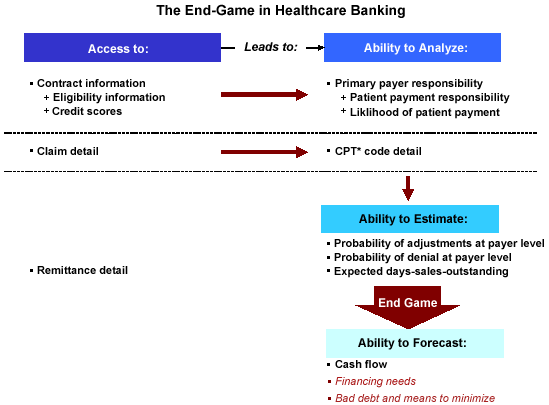Healthcare Transactions: What's in the Forecast for Financial Institutions?
Abstract
Healthcare Transactions: What's in the Forecast for Financial Institutions?
Financial institutions and third party processors can take out as much as US$50 billion of healthcare operating costs annually if they can effectively automate healthcare providers' revenue cycles and expedite exceptions handling.
Healthcare transaction processing is a complex beast characterized by a large number of stakeholders, an extensive transaction set, and significant inefficiencies resulting from the extensive use of manual, paper-based processes. The sheer number and complexity of healthcare transactions make it a ripe market for financial institutions. The number of payer-provider transactions is huge. In 2006, there were approximately 3.4 billion claims, which equate to roughly 1.1 billion payments (compared to 9.3 billion business-to-business payments).
In the inaugural report of its new Healthcare Banking research service, Healthcare Transactions: What's in the Forecast for Financial Institutions, Celent discusses the complexities of healthcare transaction processing as well as the opportunities the market presents to financial institutions. Successful institutions stand to gain not only on the transaction processing side of their business but also on the credit side through stronger relationships with both providers and payers.
Until recently, the healthcare sector appeared to be unattractive due to its glacial adoption of automation and lack of adherence to transaction standards. Today, the forecast is brighter. Adoption of electronic transaction processing is growing, and both financial institutions and nonfinancial competitors are staking out territory to capture both mind share and market share.

"Only those financial institutions with dedicated resources, proven domain expertise, sophisticated services, and scale will win. FIs that have a stake or aspire to gain a stake in the healthcare sector must offer value-added services along the revenue cycle value chain and prove that they can play a critical role in exceptions handling," said Alenka Grealish, co-author of the report and Managing Director of the Banking team.
Financial institutions won't tackle this market alone. "Leaders will expand their offerings by partnering with or acquiring the more innovative third party vendors and clearinghouses and integrating their technology with existing lockbox, cash management, and treasury offerings," adds Madhavi Mantha, co-author of the report and senior analyst.
The report is 40 pages and contains 16 figures and four tables. A table of contents is available online. The report highlights the healthcare banking initiatives of leading financial institutions such as ABN AMRO, Bank of America, Commerce Bank, Fifth Third Bank, JPMorgan Chase, KeyCorp, Mellon, PNC, and Wachovia.
Members of Celent's Healthcare Banking research services can download the report electronically by clicking on the icon to the left. Non-members should contact info@celent.com for more information.

